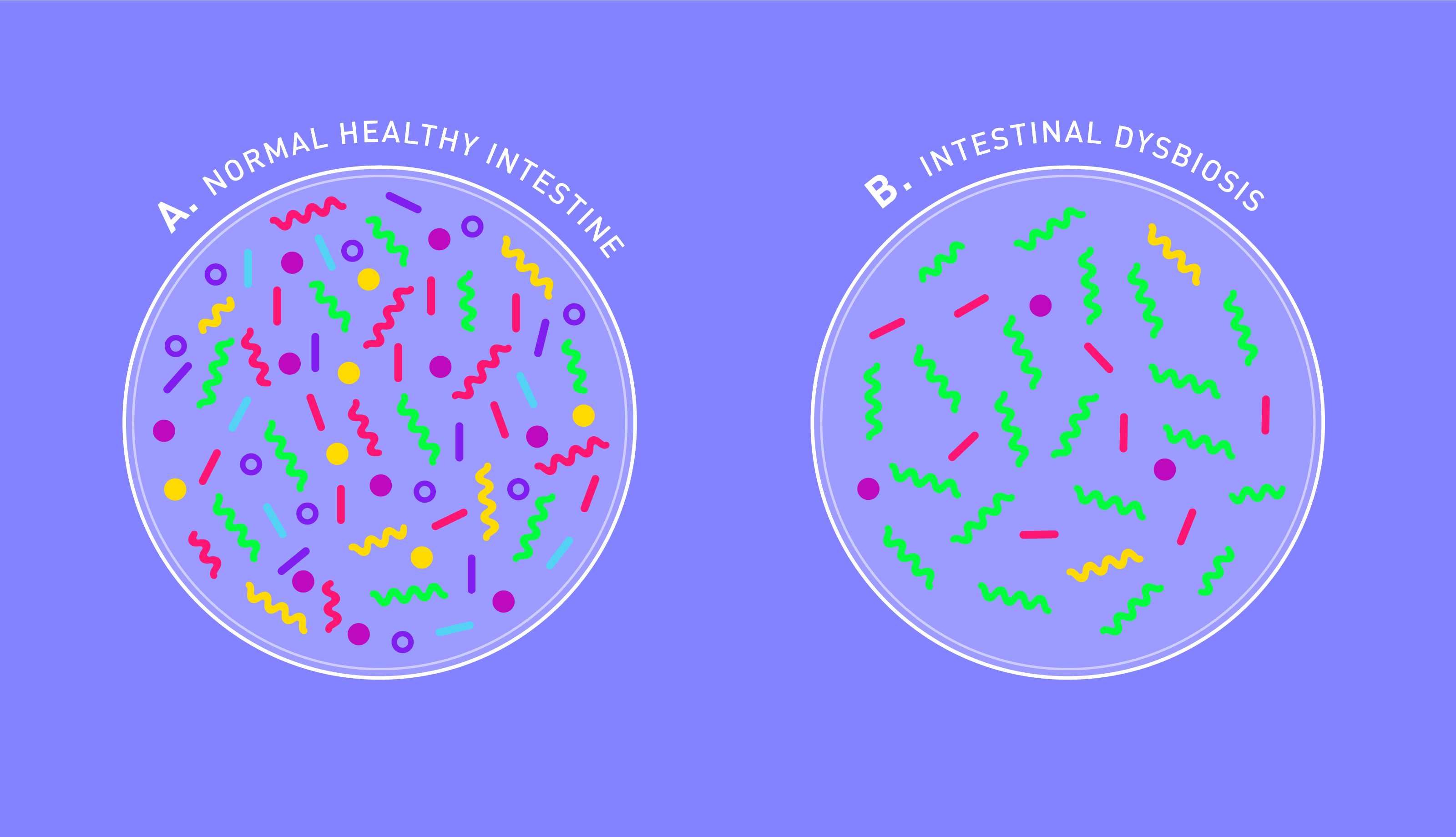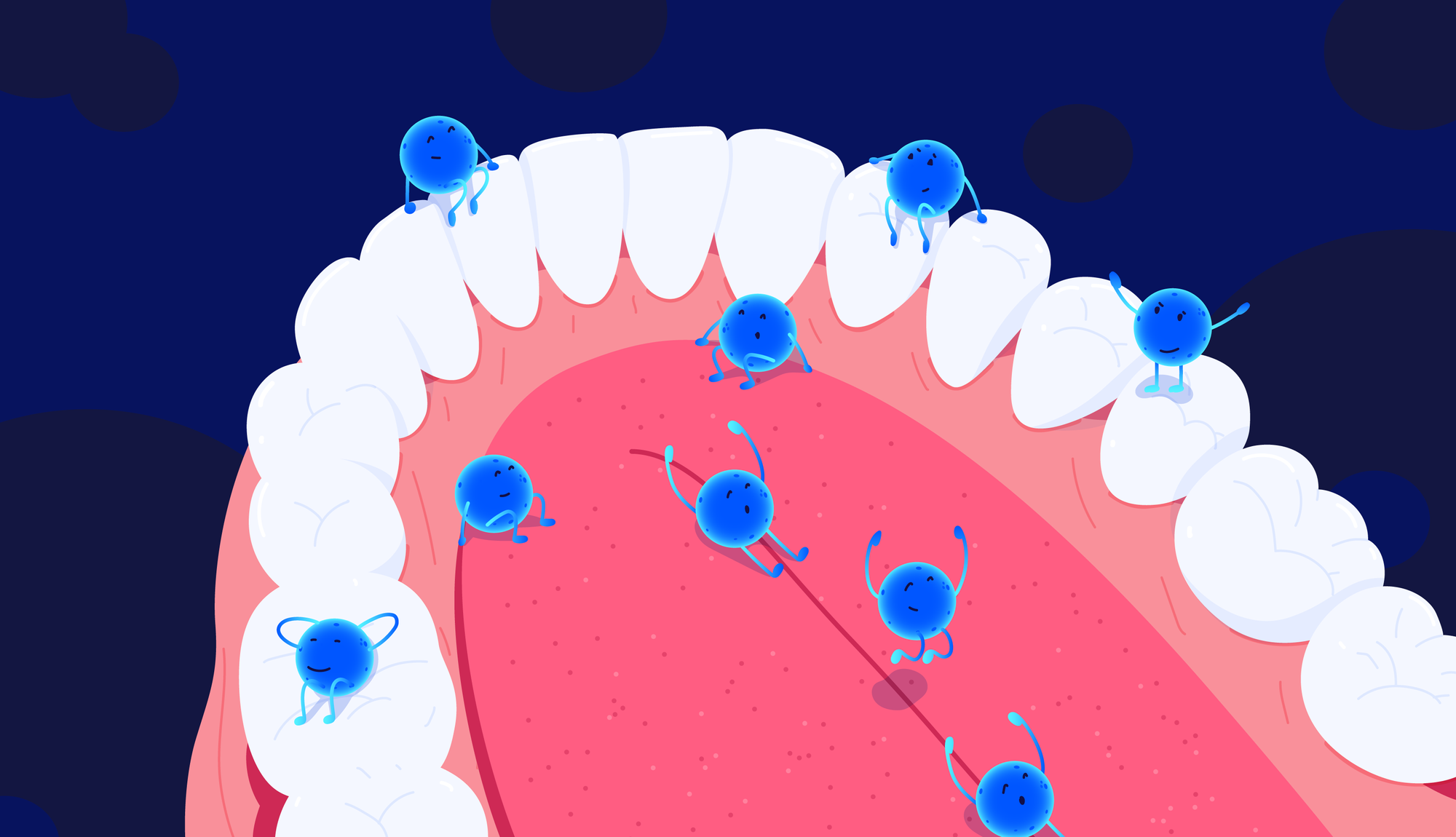Prevotella are bacteria that inhabit many parts of the body. Although common in the gut microbiome, if found elsewhere, they may be a sign of trouble or infection.
The body is full of damp, dark recesses where bacteria thrive, and this is not a bad thing. Most of the time, these microbes play a protective role by training the immune system, deterring invaders, and producing important substances, like short-chain fatty acids. Prevotella spp. stands for several species (spp.) of Prevotella.
In the human gut, Prevotella spp. are considered commensal (harmless) microbes that are often abundant in the digestive tract of people who eat a fiber-rich diet. However, some species are associated with a variety of infections and microbial imbalances when found elsewhere.
Table of contents
In this article, you’ll discover what Prevotella bacteria say about your gut microbiome, vaginal health, and oral hygiene. We’ll explore several key Prevotella species, explain their functions, and how they influence whole-body health.
☝️DISCLAIMER☝This article is for informational purposes only. It is not intended to constitute or be a substitute for professional medical advice, diagnosis, or treatment.
Prevotella in the gut microbiome
In general, rural and isolated populations, indigenous tribes, and Europeans who follow a vegetarian or Mediterranean diet tend to have a greater abundance of Prevotella. In contrast, meat-eaters tend to have more Bacteroides.
| Enterotype | Dominant bacteria | Referred to as |
| 1 | Bacteroides | Western gourmand |
| 2 | Prevotella | Veggie muncher |
| 3 | Diverse Firmicutes | Grain lover |
This distinction is so remarkable that Prevotella and Bacteroides were named the primary representatives of 2 out of the 3 major microbiome groups, known as enterotypes. First identified by Arumugam et al., the enterotype theory suggests that all human microbiomes belong to one of these groups.
You can find out more about enterotypes and your microbiome type with the Atlas Microbiome Test. People with Prevotella as the main representative are known as “veggie munchers”, because their gut microbes are good at breaking down tough fibers found in plant foods.
Prevotella species and the gut microbiome
Even though Prevotella remains a rather mysterious bacterium, studies have revealed some important insights into the relationship between specific Prevotella species and ill health.
Prevotella copri
Prevotella copri is a common inhabitant of the gut. It is more abundant in non-westernised populations, mainly due to their plant-based diets. Studies have linked P. copri to improved glucose status, as well as rheumatoid arthritis.

An increased abundance of Prevotella copri was identified in patients with untreated rheumatoid arthritis and first-degree relatives of rheumatoid arthritis patients. These results suggest that, in the future, P. copri could help identify people that are more susceptible to this inflammatory disease.
Animal models have shown that these gut microbes may trigger the immune response that causes joint inflammation. A study in mice also demonstrated that an overabundance of Prevotella copri could make the rodents more susceptible to colitis (inflammation of the gut lining) caused by chemical agents.
However, more research is still needed because this strain has also been linked to beneficial effects in other areas of human health.
☝FACT☝ Rheumatoid arthritis is an autoimmune condition where the body’s immune system attacks the lining of the joints, causing inflammation, pain, and swelling.
Prevotella histicola
Prevotella histicola is a commensal gut microbe that may have a potentially therapeutic role in Multiple Sclerosis (MS) patients, an autoimmune disorder affecting the brain and nerves. People who have MS often present with microbiome imbalances, known as “dysbiosis”.
In particular, Prevotella histicola was shown to be depleted in the gut microbiomes of MS patients. A study conducted in 2019 showed that treating transgenic mice with P. histicola alone or in combination with Copaxone, an MS medication, reduced the pro-inflammatory response associated with the disease.
An earlier study in 2017 also showed that P. histicola could suppress MS in a preclinical animal model. So, this natural inhabitant of the human gut microbiome has anti-inflammatory properties and, in the future, may have potential therapeutic uses in human health.
Prevotella melaninogenica
Previously known as Bacteroides melaninogenicus, Prevotella melaninogenica is mostly famous for its role as an opportunistic pathogen that is associated with a variety of infections, including infections of the mouth (abscesses), gut, vagina, respiratory tract, and bone marrow.
One 2017 study found that increased abundance of P. melaninogenica, P. copri, and Prevotella sp. C561, alongside a decrease in Bacteroides spp., is associated with the inflammatory autoimmune disease ankylosing spondylitis.
People with the condition have a less diverse gut microbiome, and P. melaninogenica could contribute to its development. In other words, ankylosing spondylitis could be a gut microbiome-driven disease.
Prevotella and the vaginal microbiome
The vaginal microbiome describes the microorganisms that colonise the vagina, making it exclusive to women. A healthy and balanced vaginal microbiome is fundamental in female genital health.
Prevotella bivia
Prevotella bivia is a gram-negative bacteria that belongs to the Prevotella genus. It is one of several bacteria that can play a role in the microbial imbalances that are characteristic of bacterial vaginosis.
Some studies have found that untreated bacterial vaginosis may increase the risk of pelvic inflammatory disease (PID), which can make it difficult, and even impossible, to have children. BV can also increase the risk of contracting sexually transmitted infections, like chlamydia and gonorrhoea.
A 2020 study showed that pregnant Taiwanese women with severe preeclampsia, particularly those with a higher body mass, had a greater abundance of Prevotella bivia and higher blood plasma levels of TNF-α, a pro-inflammatory molecule.
Prevotella timonensis
One study found that the presence of P. timonensis in the vaginal microbiome increased the body’s pro-inflammatory response, namely through the maturation of dendritic cells, important components of the immune system, and the increased production of proinflammatory cytokines. These findings prompted researchers to suggest that P. timonensis may contribute to preterm labour and preterm birth.
Prevotella and the oral microbiome
The mouth is the perfect habitat for bacteria to thrive because it’s warm, moist, and has a constant supply of nutrients. Plus, structures like the teeth, tongue, and gums are ideal for microbes to hide between and stick to.
Although some of the microbes in the mouth are good or even harmless, some are not, and could be responsible for things like tooth decay and gum disease. In particular, some strains of Prevotella are associated with periodontal disease.
Prevotella intermedia
Prevotella intermedia is classified as a pathogenic bacterium responsible for diseases of the gums, such as gingivitis and periodontitis. It’s also commonly isolated in dental abscesses.
40% of people with dental caries have a bacterial infection predominantly caused by Prevotella and Porphyromonas species.
Interestingly, a high abundance of P. intermedia has also been found in gout patients. Compared to healthy controls, people with gout had much greater levels of Prevotella intermedia in their saliva and an altered oral microbiome composition.
Prevotella melaninogenica
As mentioned above, Prevotella melaninogenica is associated with a range of infections. An overabundance of P. melaninogenica in the oral microbiome is found in oral lichen planus (OLP), a chronic inflammatory condition that affects the mucous membrane of the mouth.
Another study found that patients with oral squamous cell carcinoma, a type of cancer, had an above-average abundance of P. melaninogenica, Campylobacter gingivalis, and Streptococcus mitis in their saliva. This finding prompted researchers to suggest that these bacteria could be used as a diagnostic indicator of this disease.
Prevotella denticola

Little is known about Prevotella denticola, except that it is a suspected pathogen. P. denticola-driven infections are extremely rare and mostly documented as isolated case studies.
Prevotella oralis
The clue is probably in the name with this one, but Prevotella oralis is mostly found in the crevices of the gums. It grows within the biofilms of a healthy oral microbiome but, in rare cases, may cause infections.
☝FACT☝Biofilms are collectives of different microorganisms that grow on a surface together.
Prevotella oris
Often found in dental lesions, Prevotella oris loves areas of the body with little oxygen, particularly the mouth and gut. This particular Prevotella species is associated with dentoalveolar abscesses, which can be really painful and are often a result of tooth decay.
Prevotella disiens
A 2009 study identified that P. disiens may help understand the relationship between vaginal and gingival infections. Researchers found that women who had gingivitis had a higher P. disiens count, and that women with bacterial vaginosis were more likely to have gingivitis.
Prevotella loescheii
Named after the American dental microbiologist Walter J. Loesche, Prevotella loescheii is often found in people who have oral diseases, such as periodontitis and gingivitis. In some cases, it has been shown to be resistant to the antibiotic Metronidazole.
Prevotella nigrescens
Prevotella nigrescens is one of eight species of bacteria which are consistently linked to periodontal disease. P. nigrescens exists in both healthy and diseased sites in the mouth but occurs in much higher numbers in the latter.
P. nigrescens is not only found in the oral microbiome, but the vaginal microbiome too. Studies also indicate that it is is associated with the development of human papillomavirus (HPV) when detected in the vaginal microbiome.




















